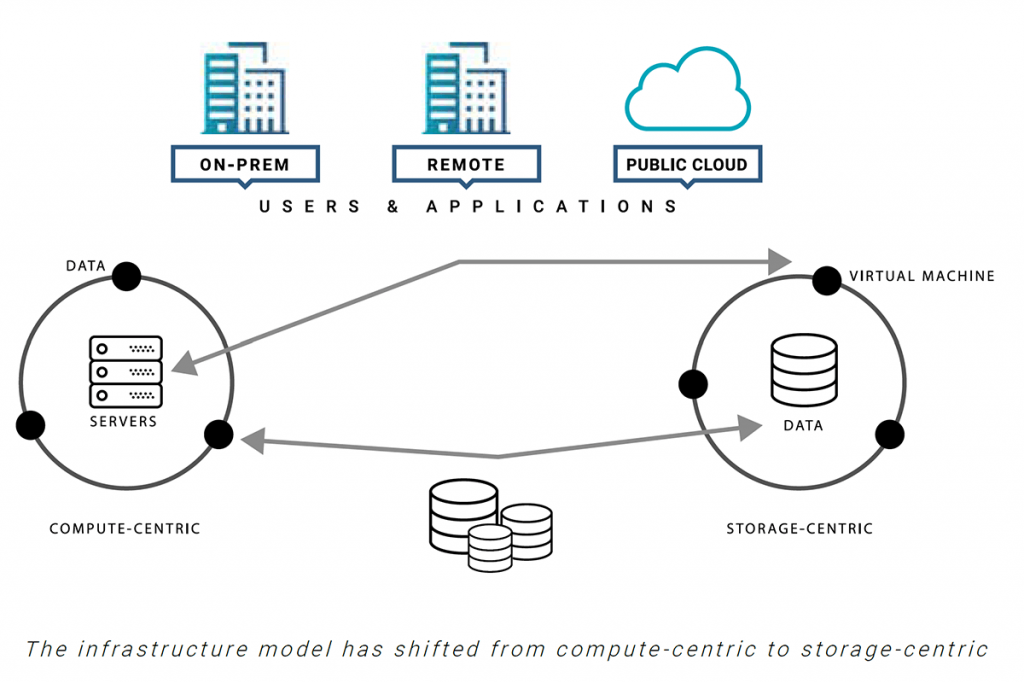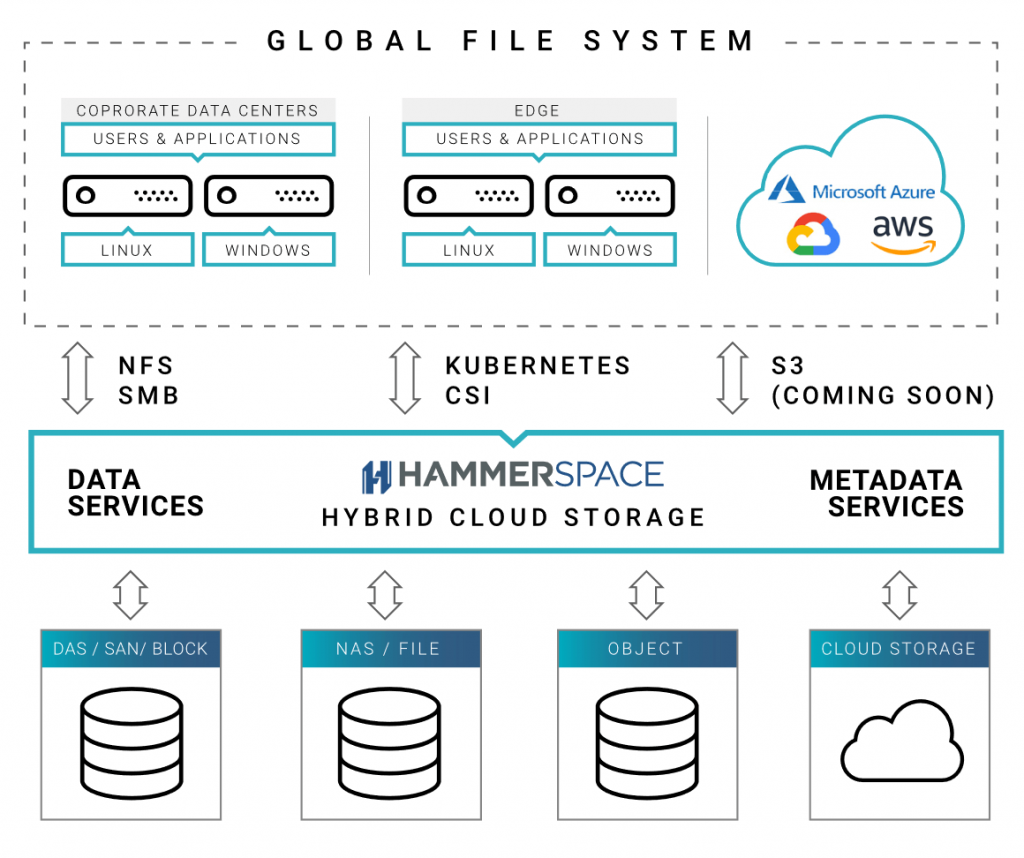We should write the word agility everywhere to remind ourselves how crucial it is for businesses these days. It is tough to build a big and powerful organization; it takes time to find people you trust with the skillset, knowledge, and experience that you need. But even if you do it, constant market changes force you to react fast to succeed! The road to success is built on a good team and a fast, precise reaction.
IT can always help with the speed of things if the approach is correct. It can be a jet engine speeding up your business if you choose the right way to attach it. With the right approach, IT can deliver the agility that your business needs to answer the market’s demands. We always think what the one thing that slows us down the most is. For data, the machine is the culprit that holds data down, making it attached to the bare-metal storage machine, trapping it on the specific location. Moving the from If we could imagine data without storage, detach it from bare-metal devices, we could imagine sky-high speed and agility for your business.

Of course, we are far from having data stored on anything other than bare-metal storage drives, but a new term, storageless data, is something the industry has recently started to use. There is a lot of ambiguity in the term; some consider it a marketing hype while others consider it a real thing. The contradiction in terms originates from the inability of the data to exist outside of the storage. So the question is: what is storageless data then?
Using the term storageless doesn’t mean that your data doesn’t live on storage. Ultimately, compute must run on servers, and data must live on a bare-metal storage device. As far as serverless computing goes, the term’s contradiction emphasizes that we do not need to care about the mapping-to-server if we want to get our jobs done. In the same way, the term storageless data is a slap in a face contradiction that tells that even if I need to work with my data, I don’t want to think about the underlying storage infrastructure. It is a consumer-centric approach because it puts in front the perspective of the users who works with the data, rather than the perspective of the IT operative who works with infrastructure. With Hammerspace, you will get your job done without the need to think about mapping to storage and the underlying infrastructure. Essentially, this concept can be described as data as a service.

Of course, there is a lot more to Hammerspace than ultimate data agility. It overcomes the siloed nature of hybrid cloud storage and delivers global data access, enables the use of any storage in hybrid cloud infrastructures, and is built for high performance. Hammerspace is a global file system that grants you access to your data from any cloud and across any infrastructure. It serves, manages, and protects data on any infrastructure… anywhere. Ultimately, Hammerspace is modernizing data workflows so they can move from IT-centric to business-centric data.

The HAMMERSPACE advantage
1. Cost profiling
Hammerspace platform constantly monitors available storage infrastructure and data behavior to predict the cost of different tiering scenarios, whether on-premises or in the cloud. It provides you with valuable and accurate information that allows you to concentrate on your infrastructure costs, allowing you to make informed business decisions.
2. Business objectives oriented automation
Now it is possible to teach your infrastructure about the nature of your business. With Hammerspace, you can define your business objectives, and the software will create extensible user-defined metadata that will help the machine learning mechanism to tier and automate the data across storage, sites, and clouds in the best way for your business.
3. Multi-site, multi-cloud
Universal global namespace, virtualized and replicated at a file-level granularity, enables active-active data accessibility across all sites. It allows access to your data from any cloud and across any infrastructure.
4. Data management at a file-level
Hammerspace enables you to manage your data to the level of a particular file. But the real benefit of this technology is that file granular data management is the only way to efficiently scale across complex mixed infrastructure without making unnecessary copies of entire data-volumes.
5. No disruptions
There are two aspects of the non-disruptiveness of Hammerspace. Zero-downtime assimilation that quickly brings data online and live data mobility technology that eliminates migration disruptions. Those two technologies combined make your data highly accessible and secure at any time.
6. High performance
Hammerspace delivers high-performance across hybrid clouds by simplifying performance and capacity planning. The planning is simplified through parallel and scale-out filesystem with direct data access.

Aside from mentioned features and advantages, Hammerspace offers a long list of useful features:
1. Native Kubernetes Support
2. Share-level snapshots
3. Undelete
4. Data replication
5. Real-time analytics
6. Support for NFS, SMB, and S3
7. Global dedupe & compression
8. WORM data-lock
9. Data-in-place assimilation
10. Data virtualization
11. Programmable REST API
12. Kubernetes CSI driver
13. Third-party KMS integration, etc.,…
We recommend you to check out this awesome video of Hammerspce CEO David Flynn explaining the concept of storageless data. Braineeing engineers are happy to work directly with Hammersapce to ensure that the infrastructure you receive is custom-tailored for your business. If you have any additional questions, want our engineers to estimate the state of your infrastructure and its compatibility with Hammerspace technology, or just want to chat, feel free to call us!
